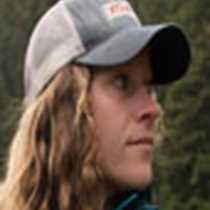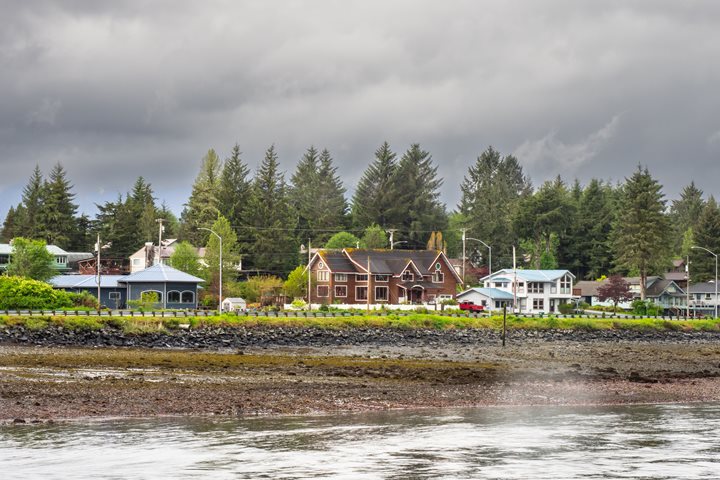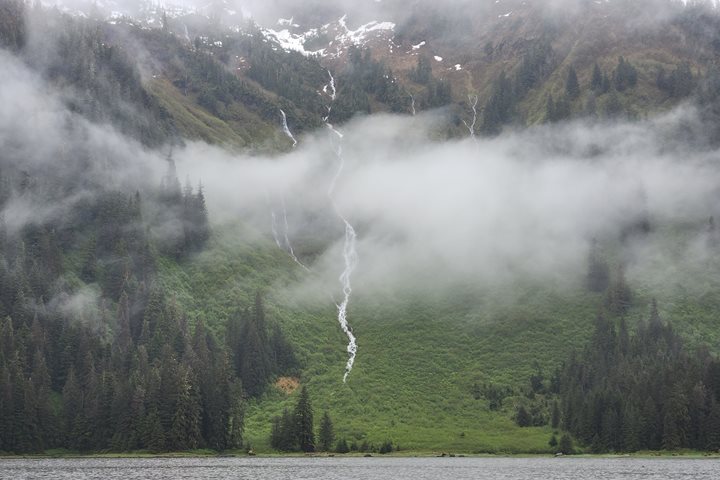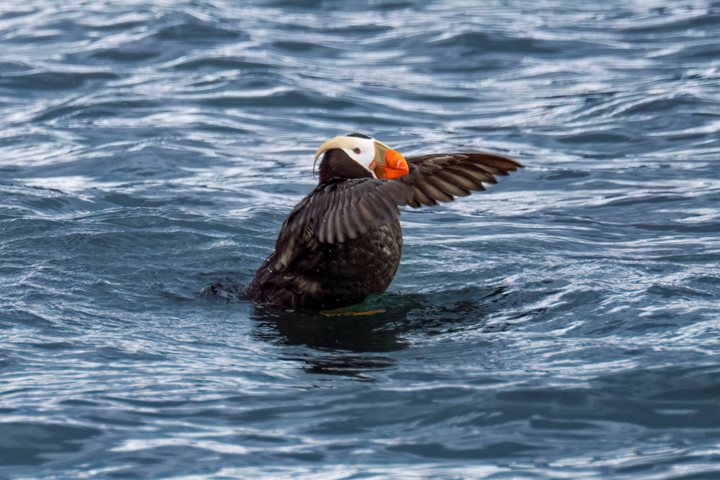The last day of the voyage quickly approached, and guests crawled out of bed fresh and ready for a new day on Friday, June 26. National Geographic Sea Bird was anchored at Pavlof Harbor, a beautiful bay prime for all sorts of outdoor activities.
The long hikers set off for the morning journey, heading up initially to the waterfall. The waterfall is a perfect location later in the season for coastal brown bears to spend time, searching for salmon. A fish ladder runs up the right hand side, building steps that allow salmon to relax in an eddy pool between jumps. The falls cascade down to a pass where saltwater comes in with high tide and mixes with the freshwater of the glacial stream. Running along the bank, the transition between saltwater and fresh is made obvious by the change in scenery. Bright green freshwater algae gives way and darker rockweed begins to occupy the same niche. The hikers stop to admire this scene, while David Stephens and Alberto Montaudon interpret the knowledge the forest shares with them. Pressing on, they follow the bear trail up into the woods, remarking about plush mossy footing and beautiful strong Sitka spruce trees. Happening upon a beaver lodge, the naturalists tell guests about the ecology of these great rodents. Beavers will create a lodge that they then use for years and years to come, the two parents representing the only consistent inhabitants. Much like humans, the older youth are pushed out after a season, making room for new pups.
The afternoon was meant for cruising towards Sitka, but became very excited as the ship passed through a group of humpback whales, feeding near the surface and breaching over and over. These animals drew so near to the ship that guests could smell their breath and hear the whistle of their lungs. This last wildlife sighting is a good lesson for those who travel: though the journey must come to an end, the adventure never does.









